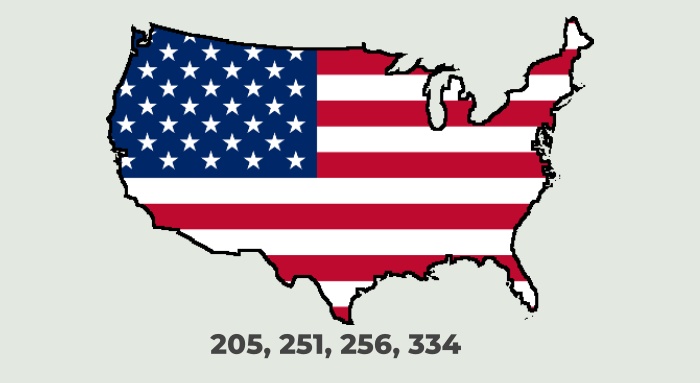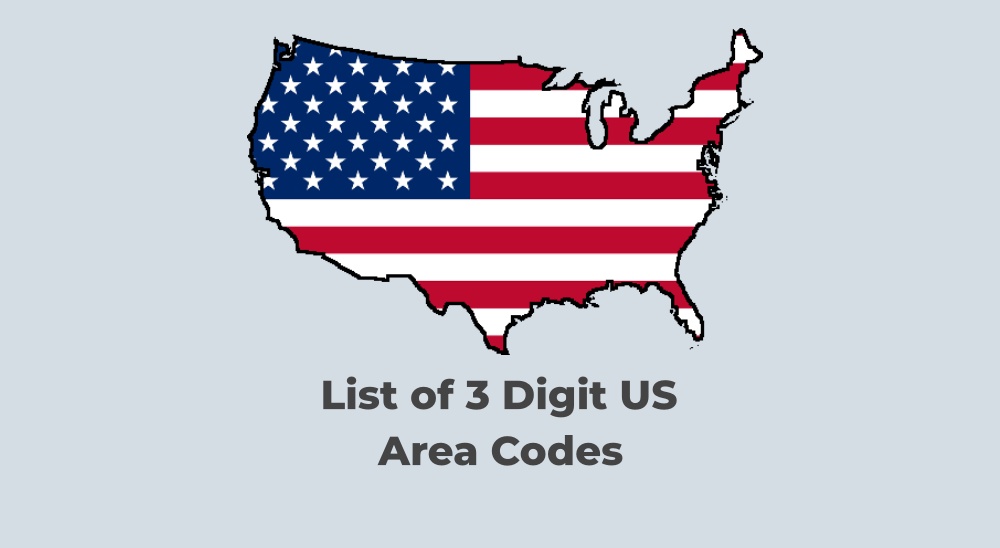In the United States, an area code is a three-digit code that is part of a phone number. It is used to designate a specific geographic region for the purpose of routing telephone calls. When you dial a phone number, the area code helps the telephone system determine which part of the country the call should be directed to.
In the United States, area codes are assigned and managed by the North American Numbering Plan Administration (NANPA). The NANPA is responsible for the administration and assignment of telephone numbers, including area codes, within the North American Numbering Plan (NANP). The NANP encompasses the United States, Canada, certain Caribbean countries, and U.S. territories.

The process of assigning area codes involves taking into account factors such as population growth, the demand for new telephone numbers, and the need for efficient call routing. When an area is running out of available telephone numbers, a new area code may be introduced to provide additional capacity.
The three-digit area codes are structured as follows:
- The first digit is a number between 2 and 9.
- The second digit can be any number between 0 and 9.
- The third digit can also be any number between 0 and 9.
The assignment of area codes is a continuous process, and new area codes are introduced as needed. Changes to area codes can also occur through processes like overlay plans, where a new area code is introduced to cover the same geographical area as an existing one, and all new numbers in that region are assigned to the new area.
U.S. Area Codes List
| State Names | Area Codes |
|---|---|
| Alaska | 907 |
| Alabama | 205, 251, 256, 334 |
| Arkansas | 479, 501, 870 |
| Arizona | 480, 520, 602, 623, 928 |
| California | 209, 213, 310, 323, 408, 415, 510, 530, 559, 562, 619, 626, 650, 661, 707, 714, 760, 805, 818, 831, 858, 909, 916, 925, 949, 951 |
| Colorado | 303, 719, 970 |
| Connecticut | 203, 860 |
| District of Columbia | 202 |
| Delaware | 302 |
| Florida | 239, 305, 321, 352, 386, 407, 561, 727, 772, 813, 850, 863, 904, 941, 954 |
| Georgia | 229, 404, 478, 706, 770, 912 |
| Hawaii | 808 |
| Iowa | 319, 515, 563, 641, 712 |
| Idaho | 208 |
| Illinois | 217, 309, 312, 618, 630, 708, 773, 815, 847 |
| Indiana | 219, 260, 317, 574, 765, 812 |
| Kansas | 316, 620, 785, 913 |
| Kentucky | 270, 502, 606, 859 |
| Louisiana | 225, 318, 337, 504, 985 |
| Massachusetts | 413, 508, 617, 781, 978 |
| Maryland | 301, 410 |
| Maine | 207 |
| Michigan | 231, 248, 269, 313, 517, 586, 616, 734, 810, 906, 989 |
| Minnesota | 218, 320, 507, 612, 651, 763, 952 |
| Missouri | 314, 417, 573, 636, 660, 816 |
| Mississippi | 228, 601, 662 |
| Montana | 406 |
| North Carolina | 252, 336, 704, 828, 910, 919 |
| North Dakota | 701 |
| Nebraska | 308, 402 |
| New Hampshire | 603 |
| New Jersey | 201, 609, 732, 856, 908, 973 |
| New Mexico | 505, 575 |
| Nevada | 702, 775 |
| New York | 212, 315, 516, 518, 585, 607, 631, 716, 718, 845, 914 |
| Ohio | 216, 330, 419, 440, 513, 614, 740, 937 |
| Oklahoma | 405, 580, 918 |
| Oregon | 503, 541 |
| Pennsylvania | 215, 412, 570, 610, 717, 724, 814 |
| Rhode Island | 401 |
| South Carolina | 803, 843, 864 |
| South Dakota | 605 |
| Tennessee | 423, 615, 731, 865, 901, 931 |
| Texas | 210, 214, 254, 281, 325, 361, 409, 432, 512, 713, 806, 817, 830, 903, 915, 936, 940, 956, 972, 979 |
| Utah | 435, 801 |
| Virginia | 276, 434, 540, 703, 757, 804 |
| Vermont | 802 |
| Washington | 206, 253, 360, 425, 509 |
| Wisconsin | 262, 414, 608, 715, 920 |
| West Virginia | 304 |
| Wyoming | 307 |
These area codes also play a role in helping people identify the general location of a phone number, although this is becoming less reliable due to factors such as number portability, where individuals can keep their phone numbers even if they move to a different area.
Are the US Area Code and ZIP Code the Same?
No, area codes and United States ZIP codes are not the same. They serve different purposes and represent different geographic divisions.
1. Area Code: An area code is a numerical code used in the North American Numbering Plan (NANP) to identify a specific geographic region when dialling a phone number. Area codes are used to route telephone calls to a particular area. For example, in the United States, area code 212 is associated with parts of Manhattan in New York City.
2. ZIP Code: ZIP codes, on the other hand, are used by the United States Postal Service (USPS) to efficiently route and deliver mail. ZIP codes are numerical codes that represent specific geographic areas. The term “ZIP” stands for “Zone Improvement Plan.” Unlike area codes, which are primarily used for telephone purposes, ZIP codes are used for postal purposes. For instance, 10001 is a ZIP code in New York City.
